Today’s post sticks to practical matters - a ‘Pro Tip’; Start a keeping a notebook with diagrams of your lighting setups, especially the complicated ones. Along with my father saying, “An artist is like everyone else, only more so.”, he also used to say, “The flimsiest piece of paper is greater than the strongest memory.” Although this sounds a bit like ‘Confucius by way of Charlie Chan’, I think it’s valid. I learned the hard way how not writing things down can come back bite you. An advertising client I had worked for returned after more than a year (I thought they were gone for good) and asked me to photograph their new product using the exact same set and lighting as before. I had spent so much time figuring out my lighting scheme the first time I assumed everything would be emblazoned in my mind forever. Not so. It’s amazing what can replace your personal RAM in a year and a half. While in the moment you may believe in your ability to remember lighting setups, I have always thanked my earlier self for writing things down. (Or, more accurately, thanked my assistants, as they usually do it if I’m busy shooting.) It doesn’t mean you can’t tweak or adjust or even improve upon what you did before (perhaps by simplifying as in LL#15), but starting from scratch is anxiety producing, frustrating (“Why didn’t you write all this down?!) and time consuming.
After a while, you’ll probably develop a repertoire of go-to lighting schemes that don’t need to be written down. But since it’s always worth trying new things and pushing your lighting skills, it’s a good idea to make some notes when something works out - or doesn’t.
Below are examples of diagrams with their resulting images. I’ve got a job ID number on each of these (I use a numbering system with year and index, i.e., job #16007 was my seventh job in 2016 but do whatever works for you.) I have my crew written down here, camera and lighting info as well as some notes on surface (important!) and rigging. When in doubt, write it out. Or draw it out.
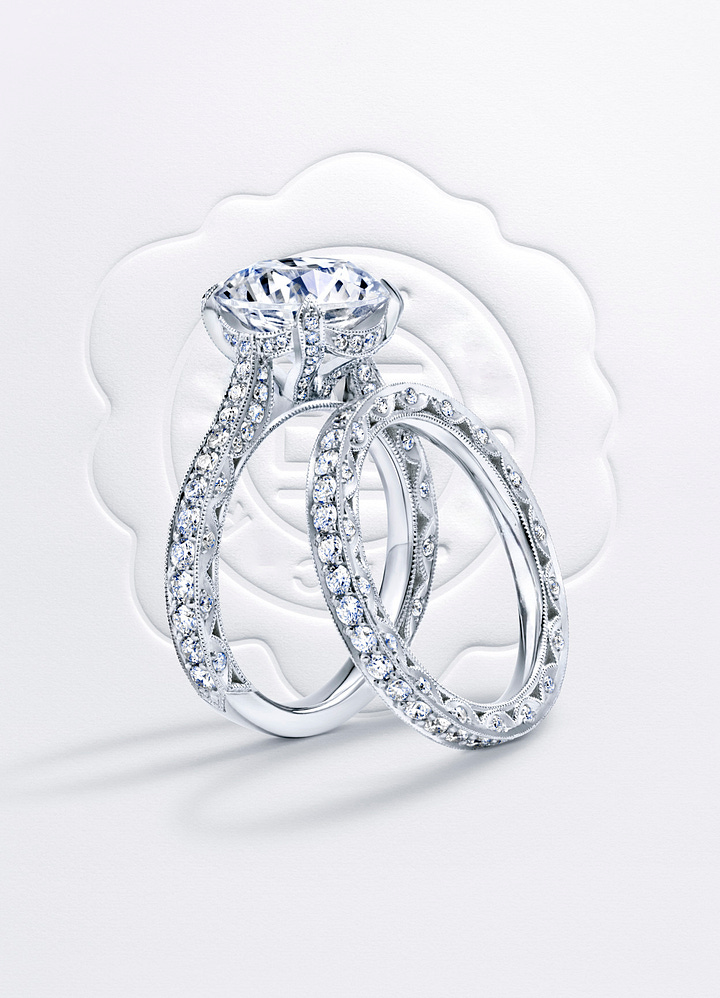
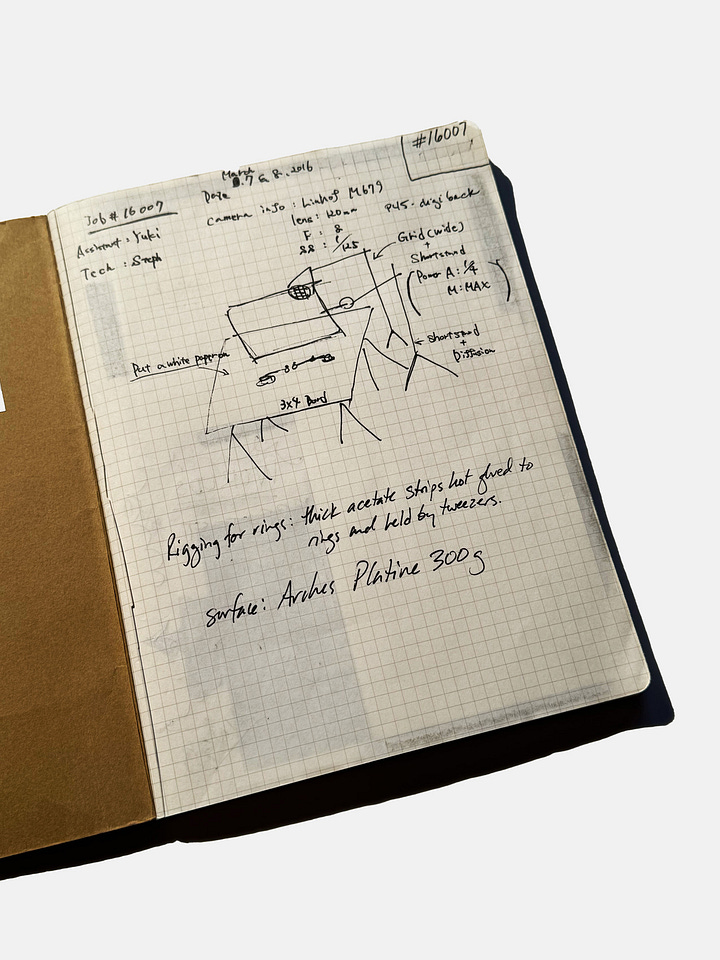
The same basic principle applies for larger on-figure jewelry shoots. I often include photographs of the set when diagrams can’t capture the idea. Below, the basic lighting setup is recorded but there still needs to be some fine tuning. These notes are a great starting point but I always end up switching over from auto pilot (looking at notes) to manual mode (trusting my instincts) at some point.
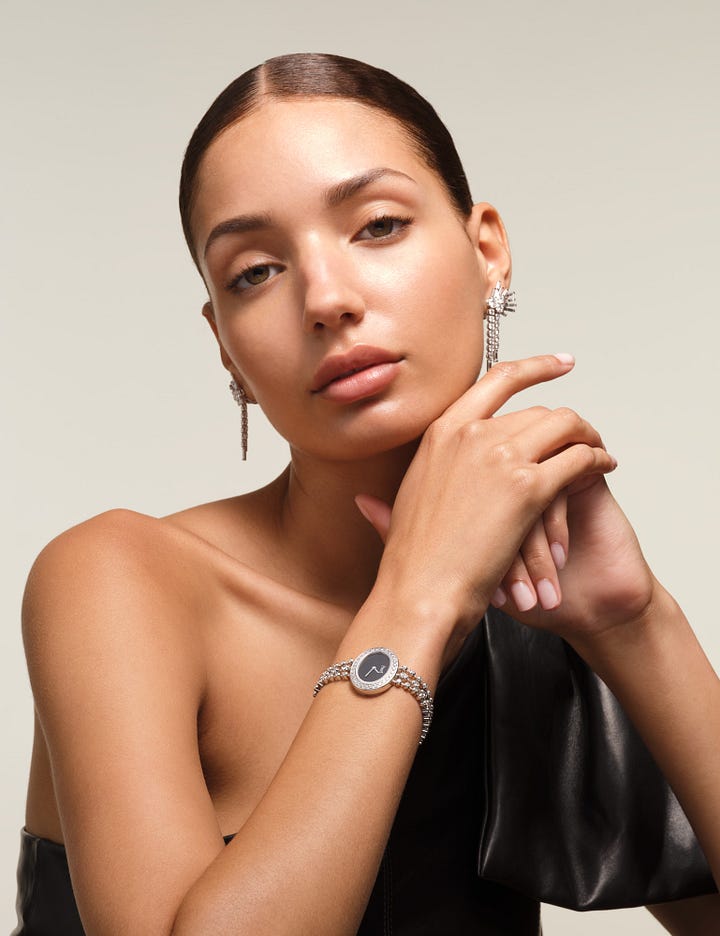
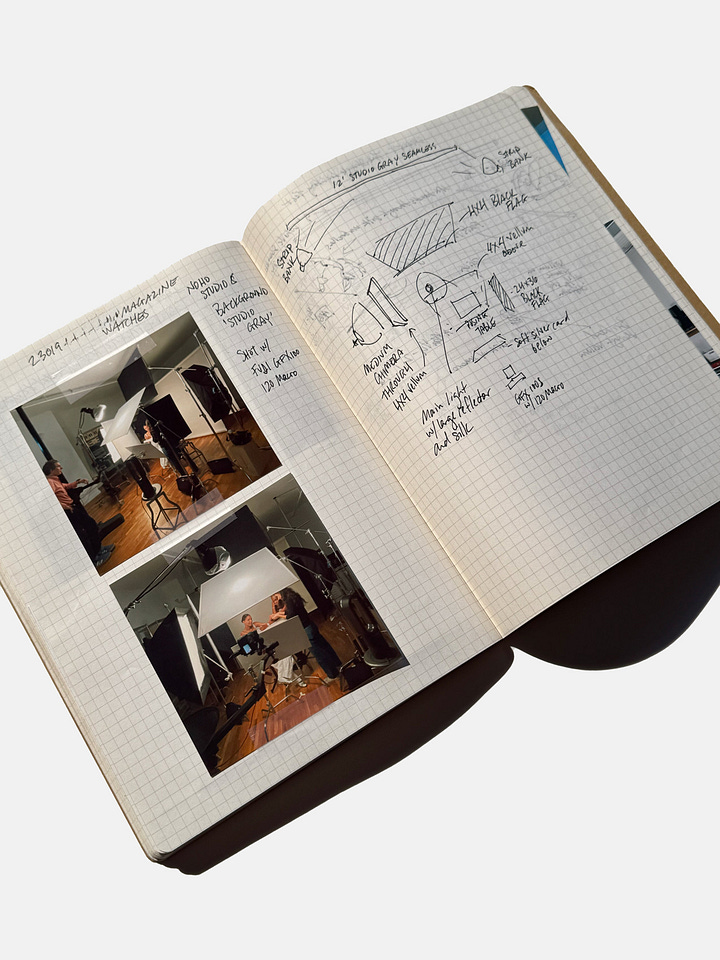
I take my notebook with me wherever I’m shooting and each assistant leaves their imprint on these pages. Below is a Parisian assistant’s version… Not all that different from mine. The Universal Language of Nerd.
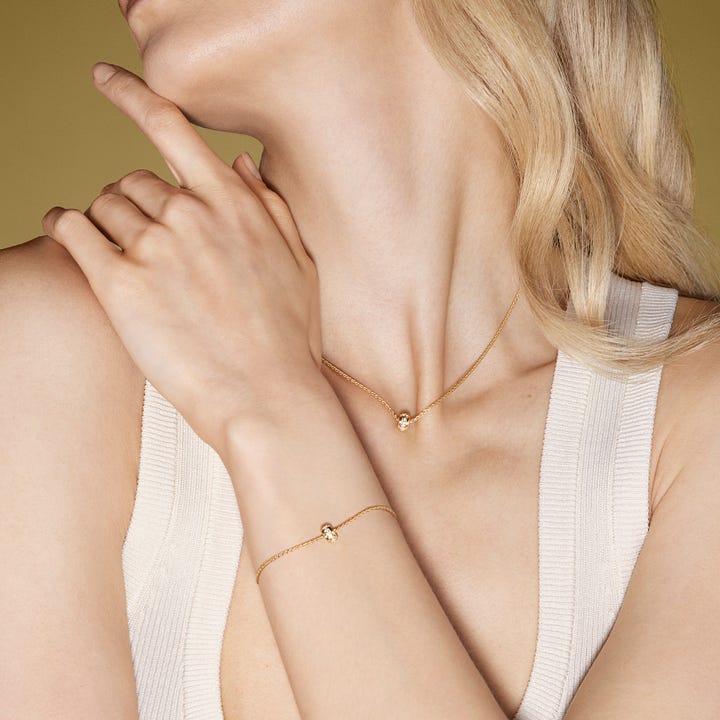
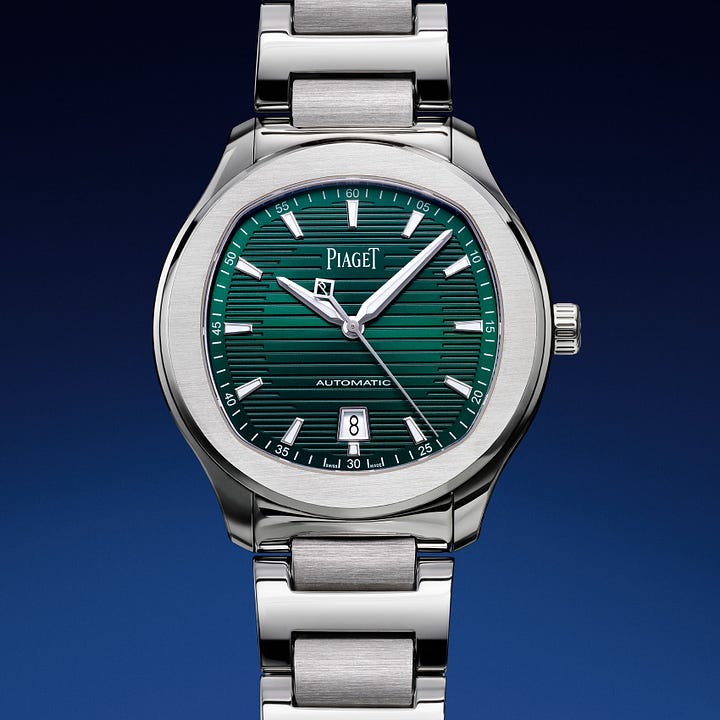




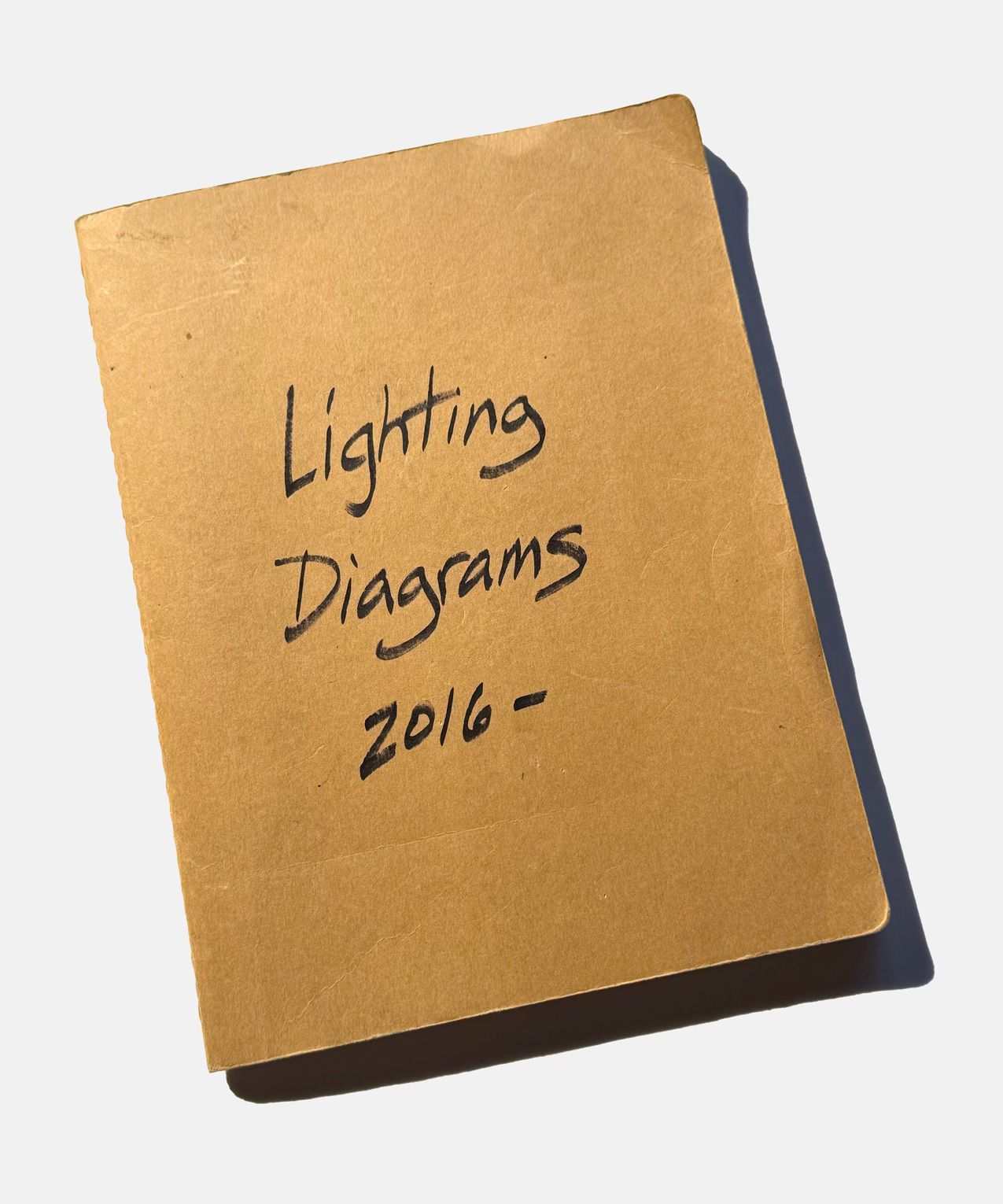
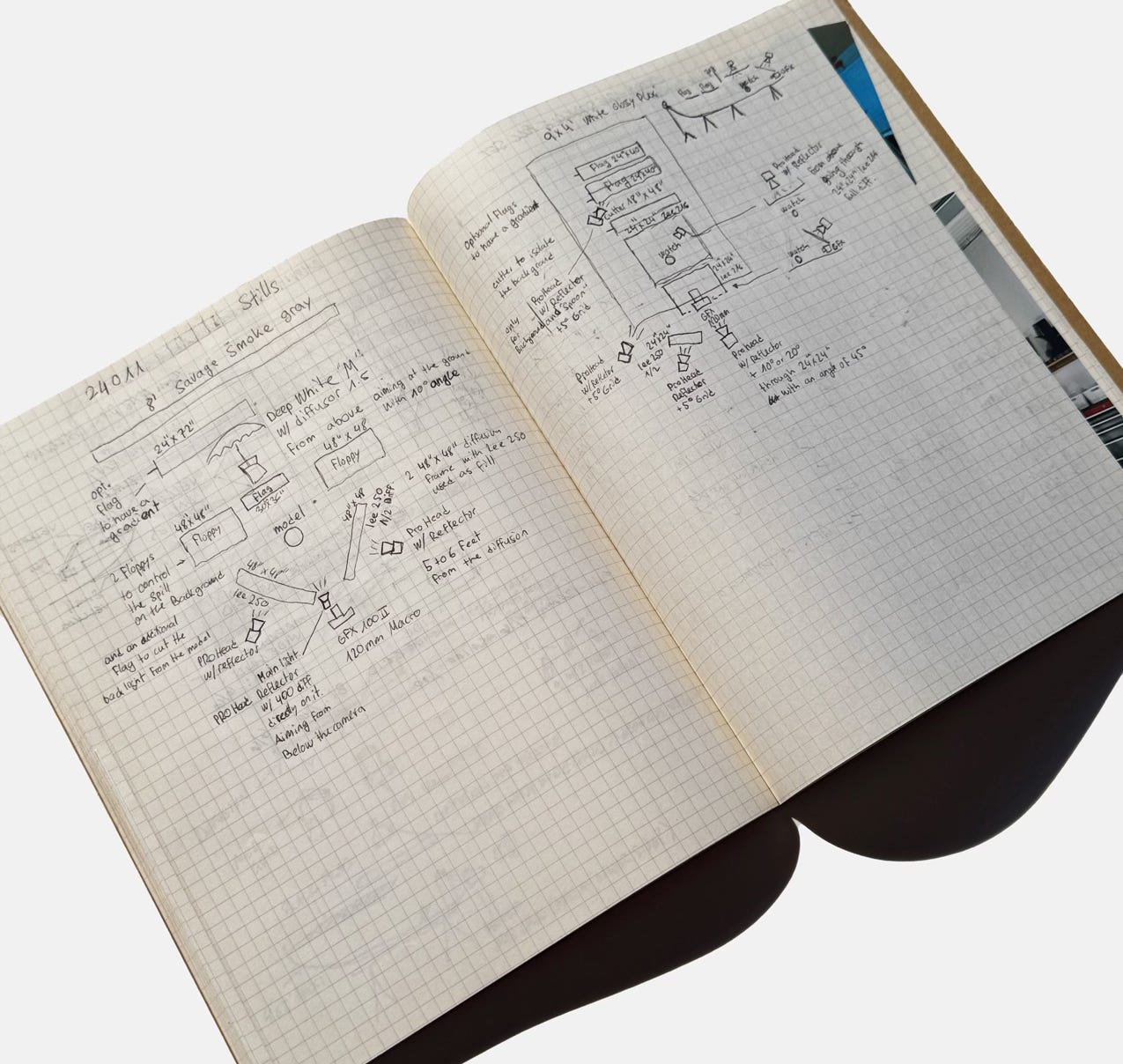
Truly amazing to see the lighting diagrams inside your notebook—they are beautiful in themselves. And fascinating to compare with the photo. Write it down...this is wise advice!
Oh man, I’d give a lot to peek inside those notebooks—just to begin to understand how to even start with setups like these. I’m starting my own today. Thanks!
Would love to see more of those pages if you ever feel like sharing!